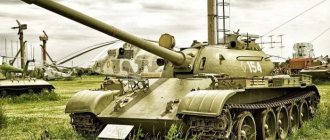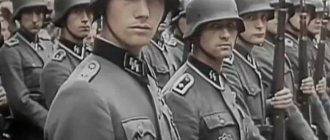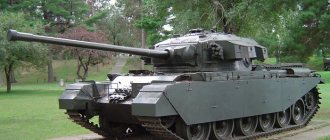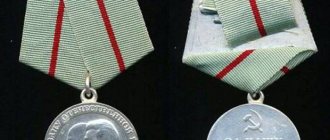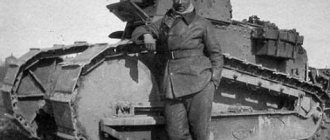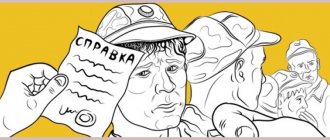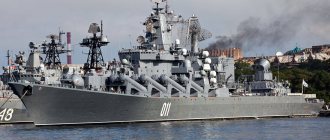military uniform from Yudashkin, photo from social networks A military uniform for a soldier is reliability, comfort, warmth, functionality and honor.
But in the Russian Federation, with the excellent development of the army, it did not always meet all 5 parameters. Moreover, the clothing of the Red Army soldier more than 100 years ago was considered the most multifunctional and thoughtful. Decades later, the situation has changed. Already in 1994, a decree was signed that announced radical changes in the military uniform of soldiers. Since then, Russia has moved away from the usual pattern of military clothing and made adjustments to the design of the new batch of clothing.
The evolution of military uniforms in Russia from 1994 to 2008, what changes have occurred?
- The color of the uniform became olive.
- The military overcoat was replaced by a long coat.
- Uniforms began to look like jackets with insert pockets.
- Stripes appeared on the sleeves. They indicated which branch of the military the employee belonged to.
After a series of such significant changes, experts and soldiers concluded that the Russian Ministry of Defense only simplified clothing and minimized various design solutions.
A new, but less radical change in form occurred in 1997. When the stars on the generals' uniforms were changed from one large star to four small ones.
Afterwards, the authorities did not make any large-scale transformations for the next 10 years.
In 2007, there was a kind of coup with the military uniform of Russian military personnel. It is about this that we want to talk about in this article.
Support the publication
- Join the CLAN
Or
We present to your attention a number of interesting and even scandalous questions about the evolution of military uniforms in Russia:
- What type of military uniform is there?
- Who is the designer of military uniforms in Russia?
- What does a Russian soldier look like and is he comfortable in special gear? clothes?
- Who sews uniforms for the Russian army?
- Is Yudashkin’s military uniform ideal?
Red Army. Ideology and military doctrine
The Red Army is the people's armed forces created to defend the gains of the October Revolution and the socialist Fatherland. This is a reliable stronghold of Soviet power. At the first stage of its existence (before Stalin’s abandonment of the ideas of world revolution and the transition to “building socialism in one country”), the Red Army was also considered by the Bolsheviks as an aid to ensuring the victories of future revolutions in other countries.
Red Army soldiers of the 1920s
The military doctrine of the Red Army was distinguished by a pronounced offensive character, which was expressed in the thesis “to beat the enemy with little blood and on foreign territory.” In their memoirs, prominent Soviet commanders indicate that such a one-sided approach ultimately played a negative role. The Workers 'and Peasants' Red Army practically did not study the defensive nature of combat operations - during retreats and encirclements. This had a detrimental effect on the events of the initial period of the Great Patriotic War.
“Take a human rest and take cover from shelling”
In the fall of 1942, the war correspondent of the army newspaper “Leninsky Put” L.I. Levin, on instructions from the editors, conducted a study of what a “dugout at the forefront” is like. An ideal dugout, where “everything was as it should be,” was discovered in one of the units of the 286th Infantry Division. Its “owner” was the crew commander, Sergeant I.P. Simak (in the pre-war past - a Siberian collective farmer), and he shared his shelter with two more Red Army soldiers.
“The walls of the dugout are already covered with boards, the door with a window for daylight, well fitted, closes tightly; in the corner there was a stove, homemade, but fully serving its purpose. A bundle of dry firewood is neatly stacked next to it. With the onset of darkness it will be possible to flood. The bunks are covered with fresh branches, on top of which a clean raincoat is spread. There are shelves nailed along the walls and pots glitter on them.” Simak called the most important characteristics of a good dugout the opportunity to “rest like a human being and take cover from shelling,” and in cold weather to warm up. The last problem was solved by a well-fitted door that would close tightly, but this is precisely what many people neglected, and then the dugout remained “an ice cellar, no matter how much it was heated”11.
Homemade huts, which were used mainly in the summer, were inconvenient. Due to the nature of their service, signalmen often spent the night in them. In the summer of 1944, communications operator Z. Zhornichenko complained in a letter to her mother that the huts were uncomfortable and did not protect against heavy rains (“we get wet like chickens”)12. She was echoed by signalman N.P. Demkina, recalling how after crossing the Neman they lived in huts; There were two people in them on one overcoat, covered with the other like a blanket. But, in general, we often slept “as necessary, wherever necessary”; Once we lay down with our telephonist friends around a tree with our heads towards him, and laughed as we waited for the commander to come to wake up the “extreme” for duty and get confused to look for him, since “everyone is lying in a heap in a circle”13.
People often lived in tents out of necessity, for example, when it was impossible to dig a dugout or build a dugout in a swampy area.
Writer Alexander Isbakh in a hut with soldiers of the Belarusian Front. May 1944 Photo: RIA Novosti
What does the Red Army look like in organizational composition?
The organizational structure of the Red Army developed during the Civil War, and was officially enshrined in the law “On Compulsory Military Service,” adopted in 1925. The entire organizational structure of the armed forces of the Soviet country was spelled out there. From this document you can get a detailed answer to the question: The Red Army - what is it in practice.
Red Army soldiers of the 1930s
The Red Army was divided into ground, sea and air forces, as well as political control troops and convoy troops. The armed forces were located in territorial military districts, into which the entire territory of the country was gradually divided. During the war, fronts were formed.
The combined arms formations of the Red Army were lined up like this:
- Corps (consisting of 2-4 divisions);
- Division - three regiments, plus an artillery regiment, engineering, technical and material support battalions;
- Regiment - three battalions, an artillery division and engineering, technical / material support companies.
“There is water in the trenches”
Huge masses of military personnel were simultaneously in the field. Mortar company commander, senior lieutenant S.I. Strakhov, described this in a letter to his wife after his trip to the front line on November 14, 1944, already being “in a room [where] it’s so warm—it’s wonderful, but outside there’s a whole doomsday going on—wind, sleet”:
“Can you imagine what it’s like on the front lines now; the day before yesterday I spent a whole day there. There is darkness in the eye, there is water in the trenches, the fighters alternately and continuously work to throw out dirt and vigilantly watch the enemy. I know that you have no idea what the front line is. So I was walking at night, there seemed to be deserted people all around, but if you look more closely, there was life all around. Thousands of people are sitting in the ground. Here is a trench - a winding, deep passage... Small dugouts nestled here and there. They entered one or another. There is a candle burning and a small stove is heating up. They rest here, sit there, talk or read something, write letters, etc. Here a person not only fights the enemy, but fights nature and bad weather. These are people whose courage is difficult to overestimate. These are heroes."3
The forest is a space that military personnel had to transform into a suitable place for living: for one night or for a long period of time. There was no choice of season; The most unfavorable time for setting up in the forest is, of course, winter. Machine gun company commander, Lieutenant V.S. Sukhanov, in a diary entry dated March 6, 1943, complained about the marshy terrain of the Kuban, but caught himself:
“Still, to some extent I was lucky - 2 winters of the war passed, and I did not have to be at the front in winter conditions. True, now I’ll catch a little, but in March it’s still tolerable, but the winter front is terrible, it’s just some kind of nightmare”4.
And here is a letter from military translator Viktor Raskin, who served in Karelia and described the end of 1943. “If there is anything truly absurd in the world, it is life in a swamp. It is very poorly equipped for housing. When you dig a dugout, you get a well. And they live in it, scooping up water with buckets and cans. And most importantly, there is no stove...” Raskin told his friend.
He summed up his front-line housing experience in March 1944:
“April 1 will be two years since I’ve been at the front, i.e. In the woods. Partly by gravity, partly thanks to self-suggestion, I stopped thinking about the city, the theater, etc. I convinced myself that all this was somewhere on another planet or in the fourth dimension, and for me there were only multi-roll dugouts, from which a whole ocean of water had to be drained in the morning , a forest chopped up with axes and shells, a telephone and endless reports, reports, orders. But I was at home (vacation in Leningrad. - Author) and lost the ability to be so indifferent to the temptations of the big city."5
Construction of a dugout.
Why is the Red Army called Red?
Initially, the command of the Red Army paid special attention to political work with personnel, their education in the spirit of devotion to the ideals of the revolution. The Red Army was named precisely in order to emphasize its revolutionary, class character.
All divisions of the Red Army had political departments that carried out political and educational work with the Red Army soldiers. Political commissars worked in close cooperation with commanders and had no less power.
Why is the Red Army of the 1920s often associated with cavalry?
During the years, the civilian command of the Red Army was able to successfully solve operational problems using large cavalry formations. The formation of mobile cavalry truly became a great achievement of the military art of that time and fully justified itself. The commander of the First Cavalry Army, Semyon Budyonny, became a legendary military leader and marshal of the Soviet Union.
Soldiers of Budyonny's First Cavalry Army
After the civilian cavalry, for many years continued to remain a numerous branch of the military in the Red Army. Even when the course towards mechanization was set, the command of the Red Army for a long time continued to consider cavalry the most universal, “eternal” branch of the military. - “What other “automobile and motorcycle squadrons”? This is absurd!”
Therefore, cavalry units and divisions of the Red Army in 1941 and subsequent years of the Great Patriotic War continued to take an active part in hostilities. But as the war progressed, it became obvious that this branch of the military was outdated. Therefore, in 1945, the cavalry of the Red Army as a branch of troops intended for combat operations ceased to exist.
How soldiers and officers had fun and lived
Tightening of pants, fornication, stretch marks, drunkenness, fights and other entertainments of soldiers for whom the army became home for many years
Author Igor Kurukin
Camp of Catherine's soldiers. Illustration by Alexander Benois for the publication “Pictures on Russian History.” 1912 © Wikimedia Commons
A recruit from the 18th century, after a long journey, ended up in his regiment, which became a home for young soldiers - after all, service in the 18th century was lifelong. Only since 1793 its term was limited to 25 years. The recruit took an oath that forever separated him from his former life; received from the treasury a hat, caftan, cape, camisole with pants, tie, boots, shoes, stockings, undershirts and trousers.
“The Colonel’s Instructions for the Cavalry Regiment” of 1766 ordered that privates be taught to “clean and dry their trousers, gloves, baldric and sword belt, tie a hat, put a casket on it and put on boots, put spurs on them, graft a braid, put on a uniform, and then stand in the required a soldier’s figure, to walk simply and march... and when he gets used to all this, begin to teach rifle techniques, horse and foot exercise.” It took a lot of time to teach a peasant’s son to behave in a smart manner, “so that the peasant’s mean habit, dodging, grimacing, scratching during a conversation would be completely exterminated from him.” The soldiers had to shave, but they were allowed to grow a mustache; They wore their hair long, down to their shoulders, and on special days they powdered it with flour. In the 1930s, soldiers were ordered to wear curls and braids.
It took a lot of time “for the peasant’s mean habit, evasion, grimace, scratching during conversation to be completely exterminated from him.”
Coming to a company or squadron, yesterday's peasant community members joined their usual form of organization - a soldier's artel (“so that there were at least eight people in the mess”). In the absence of a developed supply system (and the usual shops and stores for us), Russian soldiers adapted to provide themselves with everything they needed. Old-timers trained newcomers, experienced and skillful ones purchased additional provisions with artel money, repaired ammunition themselves and sewed uniforms and shirts from government-issued cloth and linen, and efficient workers were hired to earn money at billets. Money from salaries, earnings and bonuses was transferred to the artel treasury, at the head of which the soldiers elected a sedate and authoritative “expenditer”, or company leader.
This arrangement of military life made the Russian army of the 18th century socially and nationally homogeneous. The feeling of connection in battle provided mutual assistance and supported the soldier's morale. From the very first days, the recruit was inspired that now “he is no longer a peasant, but a soldier, who, by his name and rank, is superior to all his previous ranks, differs from them indisputably in honor and glory,” since he, “not sparing his life, ensures his fellow citizens, defends the fatherland... and thus deserves the gratitude and mercy of the Sovereign, the gratitude of fellow countrymen and the prayers of spiritual ranks.” The recruits were told the history of their regiment with mention of the battles where this regiment participated, and the names of heroes and commanders. In the army, yesterday’s “mean man” ceased to be a serf, if he had been one before. A peasant boy became a “sovereign servant” and in an era of constant wars could rise to the rank of non-commissioned officer and even, if lucky, to chief officer. Peter I’s “Table of Ranks” opened the way to obtaining the title of nobility - thus, approximately a quarter of the infantry officers of Peter’s army “came into the public eye.” For exemplary service, a salary increase, a medal, and promotion to corporal and sergeant were provided. “Faithful and true servants of the fatherland” were transferred from the army to the guard, received medals for battles; For distinguished service, soldiers were paid “a ruble” with a glass of wine.
Having seen distant lands on campaigns, the serviceman broke with his former life forever. The regiments, composed of former serfs, did not hesitate to suppress popular unrest, and in the 18th and 19th centuries the soldier did not feel like a peasant. And in everyday practice, the soldier got used to living at the expense of ordinary people. Throughout the 18th century, the Russian army did not have barracks. In peacetime, it was billeted in the houses of rural and urban residents, who were supposed to provide the military with quarters, beds and firewood. Exemption from this duty was a rare privilege.
In everyday practice, the soldier got used to living at the expense of ordinary people.
Fusiliers of infantry regiments 1700–1720 © From the book “Historical description of clothing and weapons of Russian troops”, 1842
On the short days of rest from battles and campaigns, the soldiers walked with all their might. In 1708, during the difficult Northern War, the brave dragoons “became quartered in the towns. Wine and beer were collected to the wagon train. And some members of the gentry drank too much. They vilified them vehemently, and also beat them in the name of their sovereign. But fornication still appeared. They sent the shwadron gentry into the nooks and crannies of the dragoons. Those children were young, and these whores had no way for girls and women. “Nobility” - nobles (gentry) who served in the dragoon squadron (“shkvadron”). It was these young nobles who did not allow women passage. Our colonel and worthy gentleman Mikhail Faddeich Chulishov ordered to frighten all those who were impudent and to beat them to the batogs. <...> And those dragoons and granodiers who came out of small battles - they rested and drank kumiss from the Kalmyks and Tatars, flavored with vodka, and then fought with their fists with the neighboring regiment. Where we reproached, fought and lost our bellies, and where we fought and swore Svei - the Swedes. were afraid. And in the distant shvadron they staggered and barked obscenely, and the colonels did not know what to do. By the sovereign's command, the most malicious were caught and broadcast and fought on goats in batogs in front of the entire front. And our two from the squadron also got dragoon Akinfiy Krask and Ivan Sofiykin. They were hanged by the neck. And Krask’s tongue fell out from strangulation, it even reached to the middle of his chest, and many were amazed and went to look.” “Service notes (diary) of Simeon Kurosh, captain of the Shvadron of the Dragoons, Roslavsky.”
And in peacetime, the station of troops in any place was perceived by ordinary people as a real disaster. “He debauchs his wife, dishonors his daughter... eats his chickens, his cattle, takes his money and beats him incessantly. <…> Every month, before leaving their quarters, they must gather peasants, question them about their claims and take away their subscriptions. <…> If the peasants are unhappy, then they are given wine, they get drunk, and they sign. If, despite all this, they refuse to sign, then they are threatened, and they end up falling silent and signing,” General Langeron described the behavior of soldiers at the post in Catherine’s time.
The soldier debauchs his wife, dishonors his daughter, eats his chickens, his cattle, robs him of his money and beats him incessantly.
Officers had the opportunity for more refined leisure, especially abroad. “...All the other officers of our regiment, not only young but also elderly, were engaged in completely different matters and concerns. Almost all of them, in general, the zealous desire to be in Konigsberg stemmed from a completely different source than mine. They had heard enough that Koenigsberg is a city that is filled with everything that can satisfy and satiate the passions of the young and those who spend their lives in luxury and debauchery, namely: that there were a great many taverns and billiards and other places of entertainment in it; that you can get anything you want in it, and most of all, that the female sex in it is too susceptible to lust and that there is a great many young women practicing dishonest needlework and selling their honor and chastity for money. <...> Before even two weeks had passed, to my great surprise, I heard that there was not a single tavern, not a single wine cellar, not a single billiard room and not a single indecent house left in the city that would serve our gentlemen officers. was no longer known, but that not only were they all on the list, but quite a few had already made close acquaintances partly with their mistresses, partly with other local residents, and had already taken some of them into their household and to support them, and all of them had already drowned in all luxuries and debauchery,” recalled former lieutenant of the Arkhangelsk infantry regiment Andrei Bolotov about his stay in Koenigsberg, conquered by Russian troops in 1758.
If “insolence” was allowed towards the peasants, then in the “front” discipline was demanded from the soldiers. Soldiers' poems from that era truthfully describe everyday drill:
When you go to guard duty, it’s a disaster, And when you come home, it’s twice as bad. While on guard duty, we suffer, And when you change, it’s training! Stand straighter and reach out, Don’t chase pokes, Take slaps and kicks like blinks.
Violators of the “Military Article” were subject to punishment, which depended on the degree of the offense and was determined by a military court. “Witchcraft” was punishable by burning, and desecration of icons was punishable by beheading. The most common punishment in the army was the “spitzruten chase,” when the offender was marched with his hands tied to a gun between two ranks of soldiers, who struck him on the back with thick rods. Those who committed an offense for the first time were led through the entire regiment 6 times, those who committed an offense again - 12 times. They were strictly questioned for poor maintenance of weapons, for deliberate damage to them, or for “leaving a gun in the field”; Sellers and buyers were punished for selling or losing their uniforms. For repeating this offense three times, the perpetrator was sentenced to death. Common crimes for servicemen were theft, drunkenness and fights. Punishment followed for “inattention in formation”, for “being late in formation”. Anyone who is late for the first time “will be taken on guard duty or for two hours, three Fuzey - a smooth-bore flintlock gun. on the shoulder". Those who were late for the second time were subject to arrest for two days or “six muskets per shoulder.” Whoever was late for the third time was punished with spitzrutens. Conversations in the ranks resulted in “deprivation of salary.” For negligent guard duty in peacetime, a soldier faced “serious punishment”, and in wartime - the death penalty.
“Witchcraft” was punishable by burning, and desecration of icons was punishable by beheading.
Escape was especially severely punished. Back in 1705, a decree was issued according to which, of the three fugitives caught, one was executed by lot, and the other two were sent to eternal hard labor. The execution took place in the regiment from which the soldier fled. Flight from the army was widespread, and the government had to issue special appeals to deserters with a promise of forgiveness for those who voluntarily returned to duty. In the 1730s, the situation of soldiers worsened, leading to an increase in the number of fugitives, especially among recruits. Punishment measures were also increased. The fugitives faced either execution or hard labor. One of the decrees of the Senate in 1730 reads: “Which recruits learn to run abroad and are caught, then from the first breeders, for fear of others, be executed by death, hanged; and for the rest, who are not factory owners themselves, to inflict political death and exile to Siberia to do government work.”
A common joy in a soldier's life was receiving a salary. It was different and depended on the type of troops. The soldiers of the internal garrisons were paid the least - their salary in the 60s of the 18th century was 7 rubles. 63 kopecks in year; and the cavalrymen received the most - 21 rubles. 88 kop. If you consider that, for example, a horse cost 12 rubles, then this was not so little, but the soldiers did not see this money. Some went to debts or into the hands of resourceful sutlers, and some went into the artel cash register. It also happened that the colonel appropriated these soldiers' pennies for himself, forcing the rest of the regiment officers to steal, since they all had to sign the expense items.
The soldier squandered the rest of his salary in a tavern, where sometimes, in a dashing spirit, he could “scold everyone obscenely and call himself a king” or argue: with whom exactly is Empress Anna Ioannovna “living fornicating” - with Duke Biron or with General Minikh? The drinking buddies, as expected, immediately informed, and the chatterbox had to justify himself with the usual “immense drunkenness” in such matters. At best, the matter ended in “persecution of spitsruten” in the native regiment, at worst - with a whip and exile to distant garrisons.
The soldier could argue with whom exactly Empress Anna Ioannovna is “living fornicatingly”—with Duke Biron or with General Minikh?
Bored at the garrison service, the young soldier Semyon Efremov once shared with a colleague: “Pray to God that the Turk rises up, then we’ll get out of here.” He escaped punishment only by explaining his desire to start a war by saying that “while he’s young, he can serve.” The old servicemen, who had already smelled gunpowder, were thinking not only about exploits - among the “material evidence” in the files of the Secret Chancery, the conspiracies confiscated from them were preserved: “Strengthen, Lord, in the army and in battle and in every place from the Tatars and from different faithful and unfaithful tongues and from all kinds of weapons of war... and make me, your servant Michael, like a leftist by force.” Others were driven by melancholy and drill, like private Semyon Popov, to terrible blasphemy: the soldier wrote with his blood a “letter of apostasy,” in which he “called upon the devil to come to him and demanded wealth from him... so that through that wealth he could leave military service.”
And yet the war gave a chance to the lucky ones. Suvorov, who knew the psychology of a soldier very well, in his instruction “The Science of Victory” mentioned not only speed, pressure and bayonet attack, but also “holy booty” - and told how in Izmail, which was taken by a brutal assault under his command, soldiers “divided gold and silver by the handful " True, not everyone was so lucky. To the rest, “whoever remained alive - to him honor and glory!” — the same “Science of Victory” promised.
However, the army suffered the greatest losses not from the enemy, but from illness and lack of doctors and medicines. “Walking around the camp at sunset, I saw some regimental soldiers digging holes for their dead brethren, others already burying, and others completely buried. In the army, many suffer from diarrhea and putrid fevers; when officers settle into the kingdom of the dead, for whom during their illness they are certainly better looked after, and for money doctors use their own medicines, then how can soldiers who are left in illness to the mercy of fate not die and for which medicines are either dissatisfied or completely incapacitated? There are no other shelves. Diseases are born from the fact that the army stands in a square, a quadrangle, that excreted feces, even if the wind blows a little, spreads a very bad smell through the air, that the estuary water, being consumed raw, is very unhealthy, and vinegar is not shared with the soldiers, that along the shore everywhere visible corpses are dead, drowned in the estuary in three battles that took place there,” this is how army official Roman Tsebrikov described the siege of the Turkish fortress of Ochakov in 1788.
The majority suffered the usual soldier’s fate: endless marches across the steppe or mountains in the heat or mud, bivouacs and overnight stays in the open air, long evenings in “winter apartments” in peasant huts.
Who is the Red Army?
The name “Workers and Peasants” accurately reflected the class composition of the army of the Soviet state. The formation of the Red Army took place on a revolutionary wave, so its creators rejected officers as a phenomenon itself, declaring it a “relic of the tsarist regime.”
Tanks at the Red Army parade in Moscow on November 7, 1941.
Therefore, until 1943, there were no shoulder straps or military ranks in the Red Army. Instead, there were simply job titles: “komkor” (corps commander), and so on. Instead of shoulder straps, triangles (for junior command personnel), squares (for middle command personnel), rectangles (for senior officers) and diamonds (for “red generals”) were used as insignia on buttonholes.
The introduction of shoulder straps, official ranks and their unification occurred in 1943, after the Battle of Stalingrad. Together with them, the word “officer” entered the official lexicon. This system of military ranks and insignia has remained virtually unchanged to this day. However, the original official ranks - battalion commander, brigade commander, division commander - are still used unofficially in our time.
“We sat in huts until the last seconds...”
Standing in the houses of civilians is a practice of housing Red Army soldiers, which was widespread during marches, transitions, and while on the defensive. If the houses were empty, then occupying them was not a problem. In other cases, there were options: residents showed hospitality, tried to tolerate the presence of uninvited guests, or even refused shelter. In the latter case, the army authorities could ignore the refusal.
During a long march at the end of 1941, Private Leonid Andreev and his comrades had the opportunity to spend the night in many peasant houses, which was imprinted in their memory:
“Every night we stopped to spend the night in villages, and every night there were different huts, different people and the same words, similar, like the tears of those mourning the same thing. Hundreds of peasant faces passed before me in those days... Some were stingy, greedy, others were kind and compassionate; some warmed and fed, others looked askance, grumbled, and then after sleeping on the dirty, cold floor - the hungry road of the day. We were almost not supplied, and we ate only what the peasant kindness did not spare... I don’t remember their faces, but even now I feel the warmth that comes from these unknown, distant, strangers... We were woken up on cold mornings, at 2 o’clock. 3, until the last seconds we sat in the huts for a few more warm moments, until we, dozing as we walked, were kicked out into the cold”14.
It was impossible to properly accommodate people in small villages. For example, along the route of Leonid Andreev’s ski battalion to the front line in the winter of 1942, the battalion had to be stationed in a village of three houses. “The room I ended up in was so crowded that everyone was standing close to each other... They began to fall asleep and slide down. I fell asleep too. I woke up because someone was walking on me - I found myself on the floor, on someone, someone was lying on me - someone was making their way somewhere, stepping on bodies.” There were only a few days before the battle for the dilapidated village of Chernaya near Staraya Russa. After him, 18 people remained from the battalion15.
Sometimes they occupied ready-made housing after the enemy. “They build them from boards, they destroy houses [for this], inside there are bunks, chairs, tables and even soft sofas,” said infantryman, senior lieutenant A.V., in a letter home in December 1943. Nazarenko. — There are dugouts with 2-3 rooms. The walls, ceiling and floor are lined with boards. Inside there are iron stoves, usually cylindrical, but many are square.”16 Artilleryman V. Kiselev wrote in his diary while in Poland in 1944: “I live in a German dugout. We found some kind of red wire near the ceiling, carefully tucked it in and are still not sure whether this dugout is mined or not.”17
“Let the soldiers get some sleep...” Koenigsberg. 1945
